If you’re struggling with an overactive thyroid nodule or goiter, thyroid embolization offers a minimally invasive solution—without surgery. Performed by Dr. Gabriel Lipshutz and Dr. Jonathan Steinberger, this procedure reduces nodules without surgery, helping patients with benign thyroid nodules breathe and swallow more easily. Experience expert care and lasting results with our compassionate, cutting-edge approach at DOCS Interventional Medicine.
Shrink benign thyroid nodules and improve comfort
Thyroid embolization is a minimally invasive procedure that shrinks benign thyroid nodules by reducing their blood supply. Using advanced imaging, Dr. Steinberger and Dr. Lipshutz guide a tiny catheter into the arteries feeding the nodule and inject microscopic particles to block blood flow. Over time, the nodule shrinks, relieving symptoms like pressure, difficulty swallowing, and cosmetic concerns. Unlike surgery, thyroid embolization requires no incisions, has a shorter recovery time, and preserves normal thyroid function.

What does thyroid embolization treat?
Thyroid embolization is used to treat benign thyroid nodules—noncancerous growths that can cause discomfort, difficulty swallowing, and cosmetic concerns. While these nodules are often harmless, they can grow large enough to press on the windpipe or nearby structures, leading to bothersome symptoms. Embolization reduces the size of these nodules without surgery, offering relief while preserving normal thyroid function. You can consider thyroid embolization if you have these symptoms of benign thyroid nodules:
- A visible lump in the neck
- Pressure or discomfort in the throat
- Difficulty swallowing or breathing
- Hoarseness or voice changes
- A sensation of fullness in the neck
- Cosmetic concerns due to nodule size
How does thyroid embolization work?
Thyroid embolization works by reducing blood flow to the thyroid nodule, causing it to shrink over time. Using advanced image guidance, Dr. Lipshutz or Dr. Steinberger carefully threads a tiny catheter into the arteries supplying the nodule. They then inject microscopic particles that block these arteries, limiting the nodule’s oxygen and nutrients. Without this supply, the nodule gradually decreases in size, relieving pressure and symptoms. The procedure is performed through a small pinhole in the skin, avoiding surgery while preserving normal thyroid function.
Advantages of thyroid embolization:
- Minimally invasive with no surgical incisions
- Short recovery time, allowing a quick return to daily activities
- Preserves normal thyroid function, avoiding hormone replacement therapy
- Effectively shrinks benign thyroid nodules over time
- Reduces symptoms like pressure, difficulty swallowing, and voice changes
- Performed under local anesthesia, avoiding general anesthesia risks
- Outpatient procedure with no hospital stay required
- Lower risk of complications compared to traditional thyroid surgery
- Provides a cosmetic improvement by reducing visible neck lumps

What is recovery like after thyroid embolization?
Recovery after thyroid embolization is quick and manageable, allowing you to return to your normal routine faster than with surgery. Most patients go home the same day and experience only mild discomfort, such as a sore throat or low-grade fever, which resolves within a few days. You can typically resume light activities within 24 hours and return to work within a few days. Over the next few months, your thyroid nodule will gradually shrink, relieving symptoms and improving comfort—all without major downtime or long-term medications.
Schedule your consultation
DOCS Interventional Medicine is where expertise meets compassionate care. Led by Dr. Steinberger and Dr. Lipshutz, our team specializes in advanced, minimally invasive treatments that improve health and quality of life. With over a decade of experience at Cedars-Sinai, we offer cutting-edge procedures like thyroid embolization to provide relief without surgery. If a thyroid nodule is affecting your daily comfort, schedule your consultation today.

